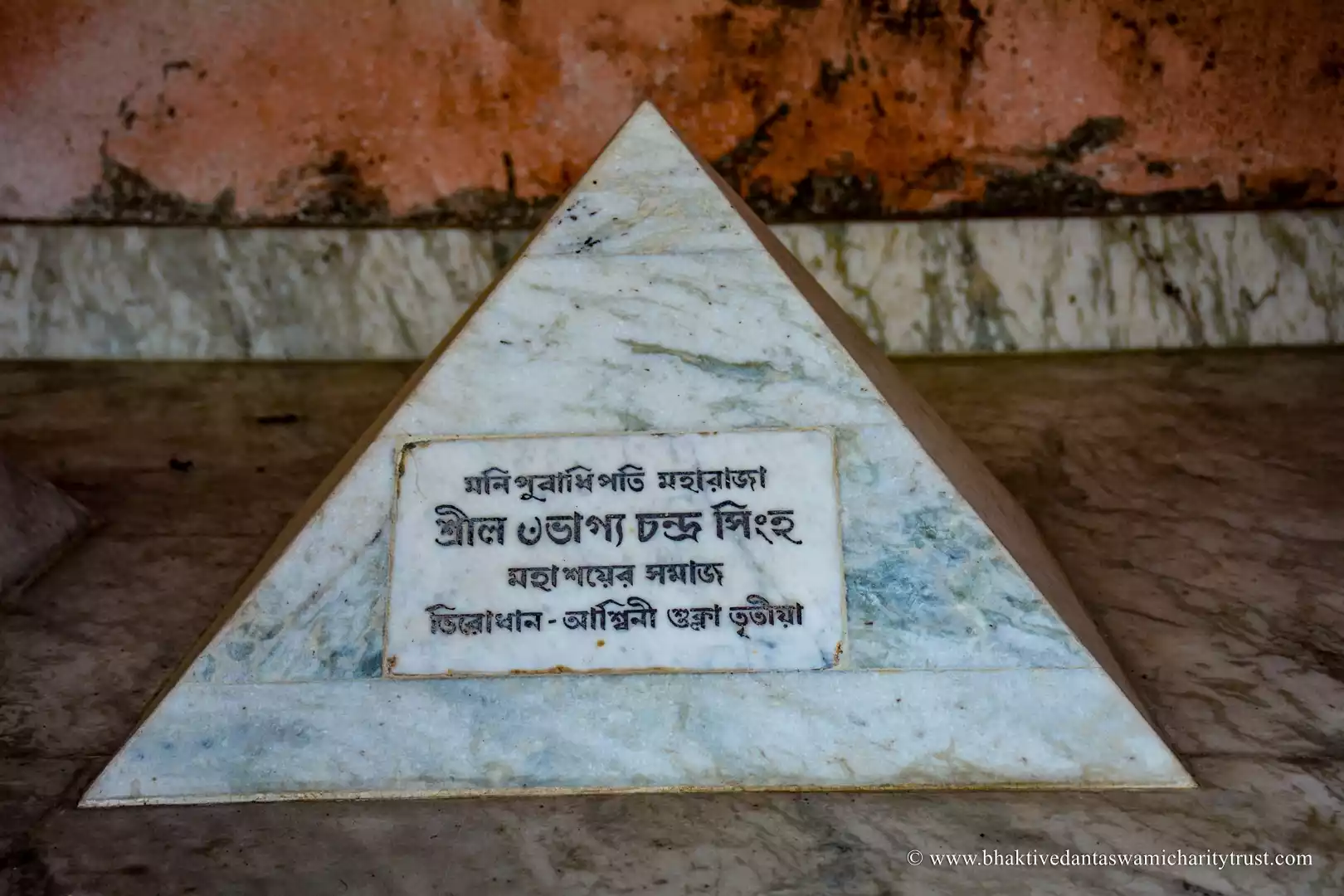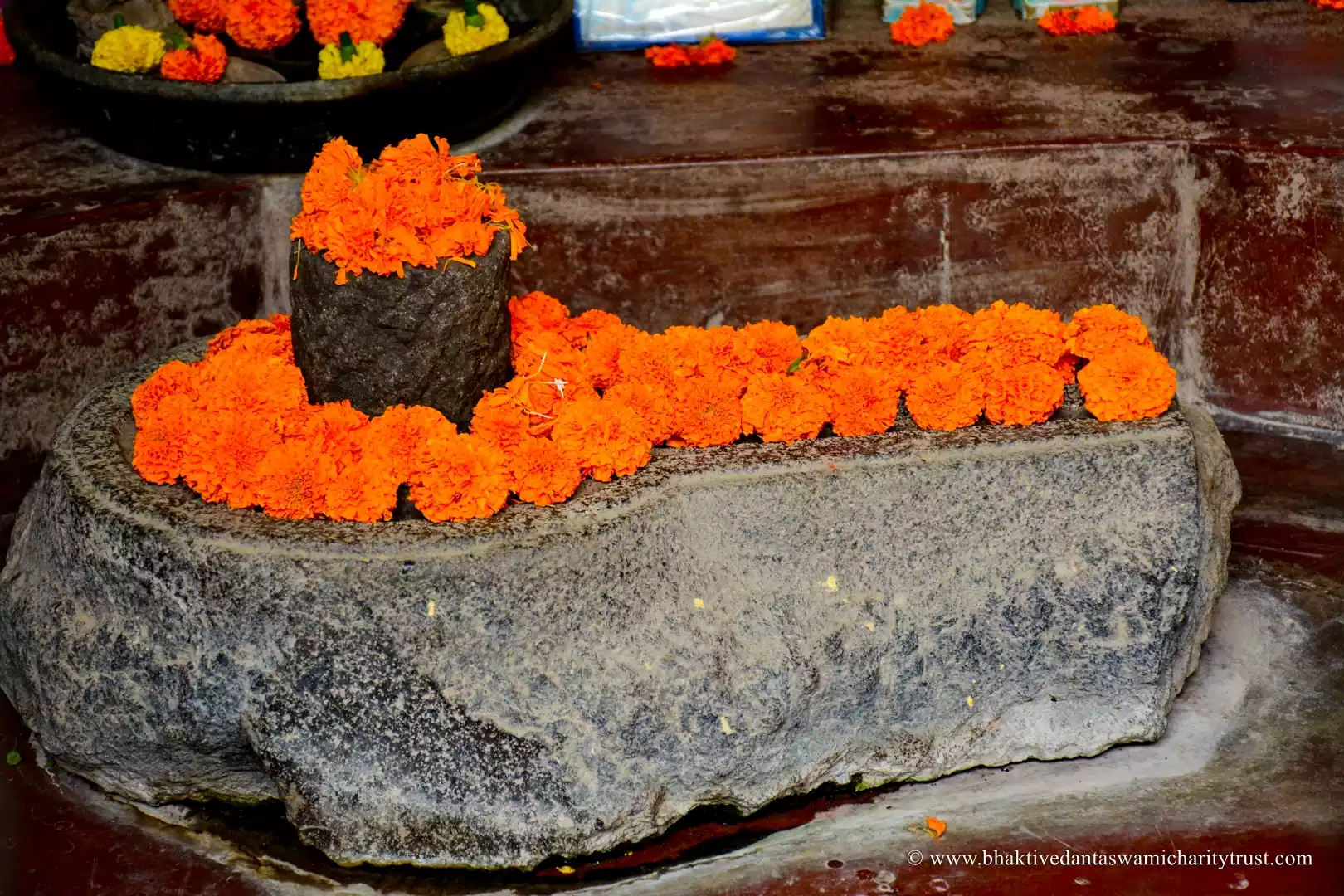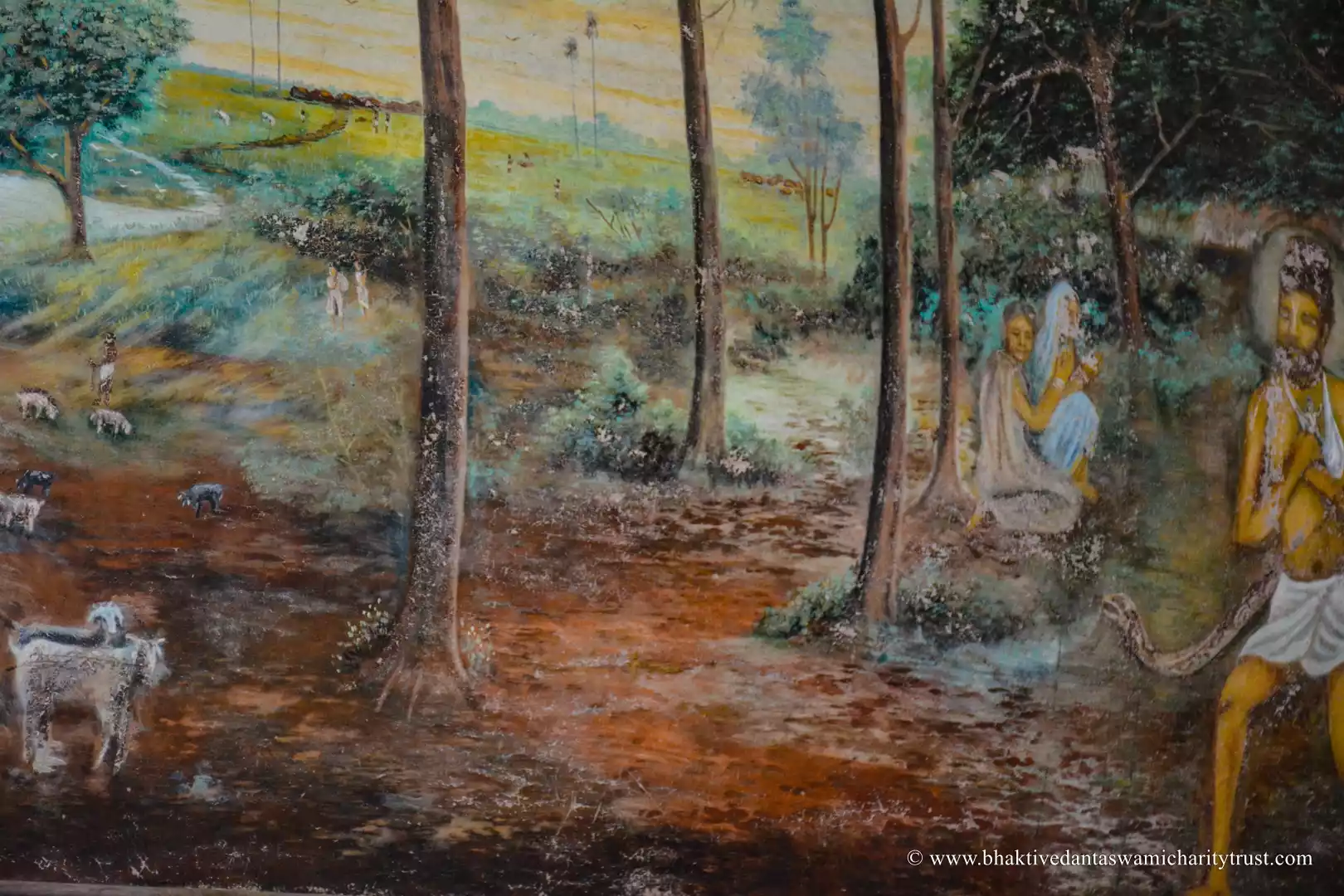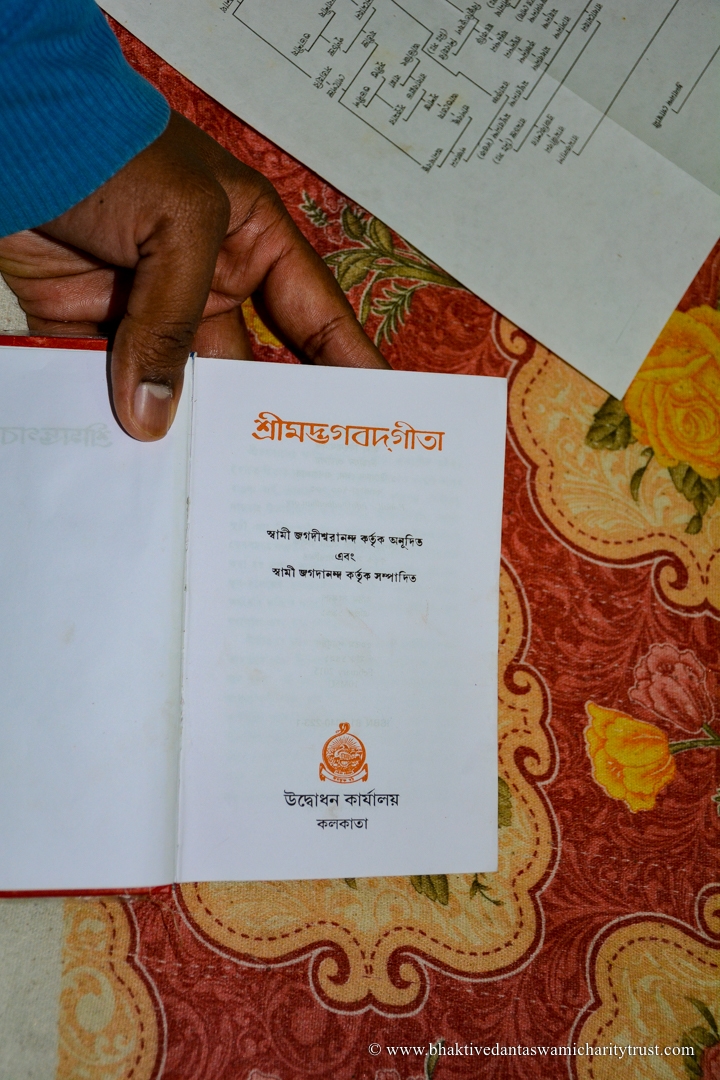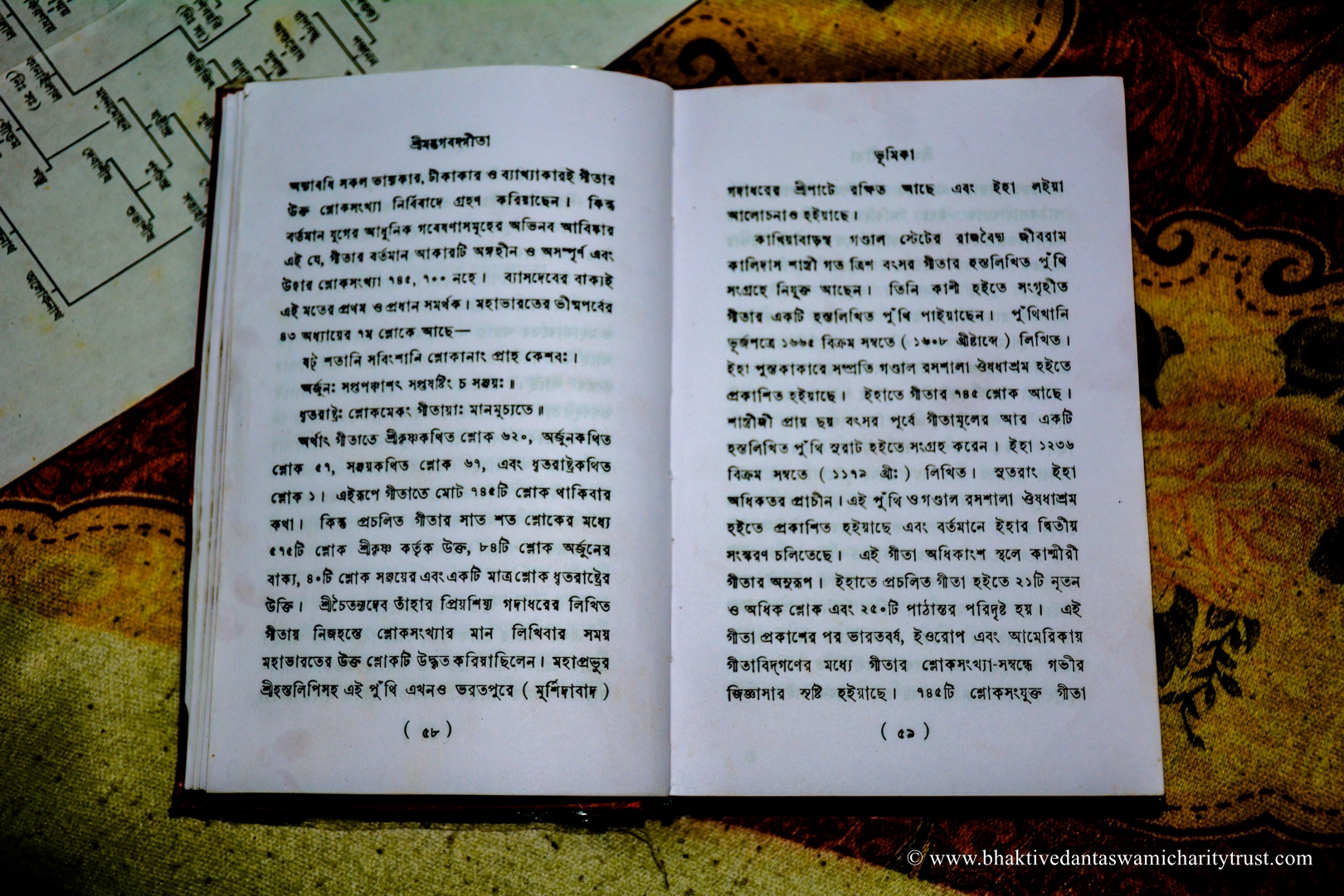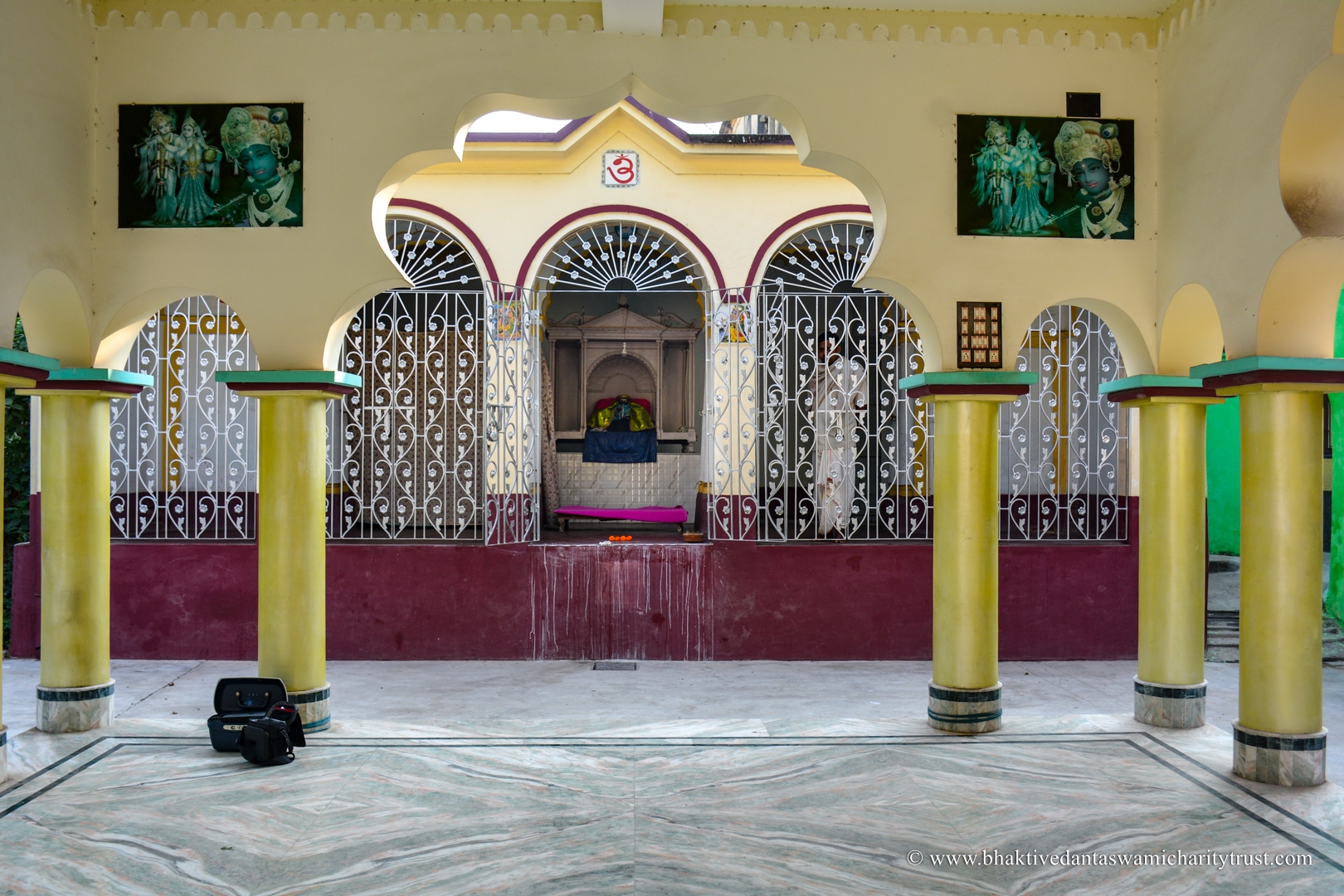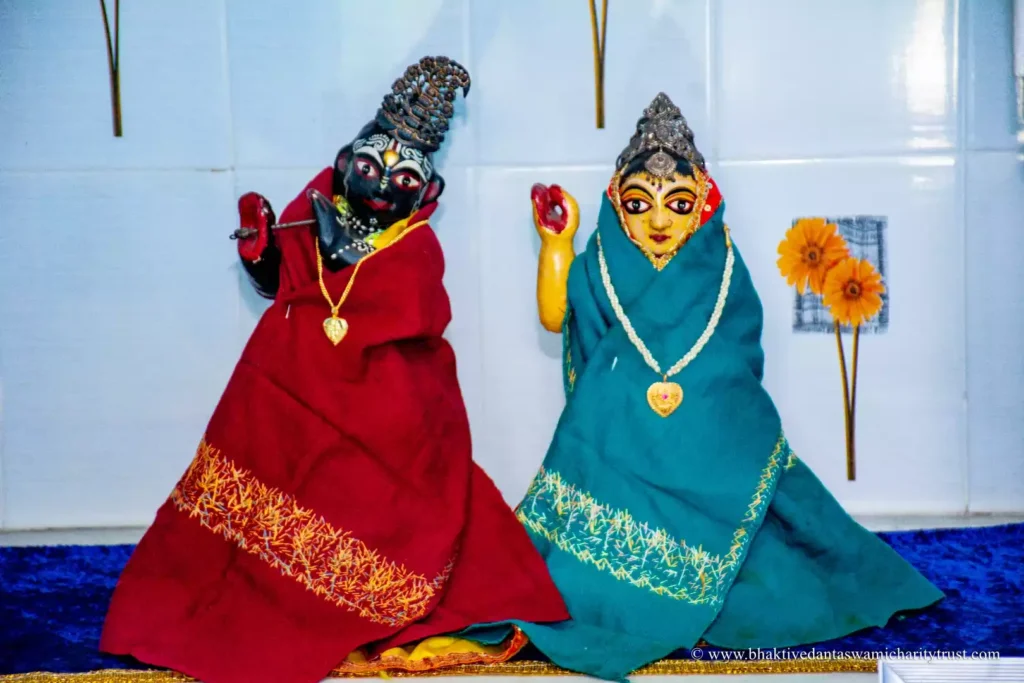Gāmbhīlā
Description
Śrīla Narottama Dāsa Ṭhākura’s chief disciple Śrī Gaṅgā Nārāyaṇa Cakravartī's Śrīpāṭa
Gāmbhīlā is situated in the district of Murshidābād. Getting down at Jiyāgañja station in Seāldaha-Lālgolā railway route, one can travel one and half kilometers from the station by rickshaw-van to come to this Begamgañja Govinda-bāḍi Śrīpāṭa.
This is the place of pastime of Śrīla Narottama Dāsa Ṭhakura. This is the Śrīpāṭa of Śrī Gaṅgā Nārāyaṇa Cakravartī, the chief disciple of Śrīla Narottama Dāsa Ṭhākura. The present name of this Gāmbhīlā is Jiyāgañj. It is known to the local people as ‘Baḍa Ṭhākura.’ It is described in the twentieth Vilāsa of Śrī Prema Vilāsa-
āra śākhā gaṅgānārāyaṇa cakravartī
gaṅgā tīre gāmbhīlā grāmete yāṅra sthiti
Gaṅgā Nārāyaṇa Cakravartī was residing in the Gāmbhīlā village which was situated on the bank of the Ganges.
Narottama Dāsa Ṭhākura exhibited many transcendental activities in this Gāmbhīlā village. Narottama Dāsa Ṭhākura appeared in a Kāyastha family but he preached the devotional service to all the people irrespective of caste and creed. People from higher caste took shelter of his lotus feet. By seeing this, the brahmins could not tolerate. They became envious of Narottama Dāsa Ṭhākura. The most merciful Narottama Dāsa Ṭhākura also delivered all these envious people. This is described in the eleventh Vilāsa of Śrī Narottama Vilāsa-
prabhura sebāte sabe sāvadhāna kari
kathojana saṅge śīghra āilā budhari
tathā haite āilā gāmbhīlā gaṅgā tīre
akasmāt jvara āsi vyāpila śarīre
citā sajjā kara śīghra ei ājñā diyā
rahilena mahāśaya nīrava haiyā
aiche mahāśaya tina dina goṅāilā
loka dṛṣti deha haite pṛthaka hailā
mahāśaye snāna karāiyā seikṣaṇe
citāra upara rākhilena divyāsane
paraspara kahe sukhe brāhmaṇa sakala
vipra śiṣya kaila yaiche tāra ei phala
gaṅgānārāyaṇa brahma kichu nā kahila
vākyarodha haiyā narottama dāsa maila
gaṅgānārāyaṇa aiche paṇḍita haiyā
hailena śiṣya nija dharma teyāgiyā
dekhila gurura daśā haila yemana
nā jāni ihāra daśā haive kemana
Everybody was careful to serve Prabhu. Soon he came with some others to Budhari. From there they came to Gāmbhīlā on the bank of the Ganges and suddenly he got fever. Mahāśaya kept quite after giving order for making arrangement for the funeral pyre quickly. Mahāśaya stayed in that state for three days and he separated himself from his body in the eyes of the people. Then they bathed Mahāśaya and kept him on the transcendental funeral pyre. The brahmins were talking with each other happily that he made the brahmins as his disciples and this is the result of this act. Gaṅgānārāyaṇa did not say anything. They said, ‘Narottama Dāsa’s voice was chocked and he died. Being a learned man, Gaṅgānārāyaṇa became his disciple rejecting his own religion. He saw the state of his Guru and it is not yet known what will be the state of Gaṅgānārāyaṇa.’
In this way, pointing finger at Gaṅgānārāyaṇa Cakravartī, the brahmins were enjoying. To deliver these atheists, Gaṅgānārāyaṇa went near Śrīla Narottama Dāsa Ṭhākura and was praying by folding his hands, ‘O my Prabhu, you have delivered so many fallen souls of this world and now you are leaving with- out delivering these atheists. Please deliver them also. They all are acting like this for they do not understand your transcendental glories. Please remove my grief by delivering them.’ Narottama Dāsa Ṭhākura became merciful by hearing Gaṅgānārāyaṇa. This is described in the eleventh Vilāsa of Śrī Narottama Vilāsa-
gaṅgānārāyaṇera e vyākula vacane
nijadehe mahāśaya āilā seikṣaṇe
rādhākṛṣṇa caitanya baliyā narottama
uṭhilena citā haite teja surya-sama
caturadike haridhvani kare sarbajane
akasmāt puṣpa bariṣaye devagaṇe
dure thāki dekhi saba ninduka brāhmaṇa
mahābhaya haila sthira nahe kona jana
Mahāśaya came back in his body at that time by seeing the eagerness of Gaṅgānārāyaṇa. Narottama got up from the funeral pyre like the bright sun by uttering Rādhā-kṛṣṇa- caitanya. All were sounding the name of Hari in all directions. Suddenly the demigods were showering flowers from the sky. The blasphemer-brahmins were watching from a distance. They became fearful and restless.
In this way, the evil-mindedness of the blasphemer-brahmins was removed. Then Narottama Dāsa Ṭhākura got up and walked to Gaṅgānārāyaṇa Cakravartī’s house. All these brahmins begged forgiveness from Ṭhākura Mahāśaya. Then Ṭhākura Mahāśaya showered his mercy upon them. In this way, Narottama Dāsa Ṭhākura exhibited many transcenden- tal pastimes in Gāmbhīlā village. Ṭhākura Mahāśaya used to come occasionally to Gāmbhīlā from Kheturi via Budhari for Gaṅgā-bath. This was the path-way for coming and going to Kheturi for the Vaiṣṇavas. During the festival in Kheturi the Vaiṣṇavas were traveling through this path-way.
After a few years, Narottama Dāsa Ṭhākura again performed his disappearance pastime in this Gaṅgā-ghāṭa at Gāmbhīlā. Rāmakṛṣṇa Ācārya and Gaṅgānārāyaṇa Cakravartī took Narottama Dāsa Ṭhākura to the Gaṅgā- ghāṭa. Narottama Dāsa Ṭhākura sat at the bank of the Ganges after taking bath. He ordered them, ‘Both of you massage my body.’ Immediately after touching the body of Narottama Dāsa Ṭhākura for massaging, suddenly Narottama Dāsa Ṭhakura disappeared in the waves of the Ganges in the form of milk. This pastime is very difficult to understand for normal people. By seeing this, the people were astonished. The demigods observed this dis- appearance pastime of Śrī Mahāśaya and they showered flowers from the heavens. The above has been described in the eleventh Vilāsa of Śrī Narottama Vilāsa-
budhari haite śīghra calilā gāmbhīlā
gaṅgāsnāna kariyā basilā gaṅgājale
ājñā kailā rāmakṛṣṇa gaṅgānārāyaṇe
mora aṅga mārjana karaha duijane
doṅhe kibā mārjana kariba paraśite
dugdhaprāya miśāilā gaṅgāra jalete
dekhite dekhite śīghra hailā antaradhāna
atyanta durgeñya ihā bujhiva ki āna
akasmāt gaṅgāra taraṅga uthalila
dekhiyā lokera mahā vismaya haila
śrī mahāśayera aiche dekhi saṅgopana
variṣe kusuma svarge rahi devagaṇa
In this way Narottama Dāsa Ṭhākura exhibited many transcendental pastimes in Gāmbhīlā and made this Gāmbhīlā a great pilgrimage place. The devotees took some water from the Ganges and made a samādhi with that Gaṅgā water on the side of Gaṅgānārāyaṇa Cakravartī's house, which is called ‘Dudha-samādhi’. The Gaṅgā-ghāṭa where Narottama Dāsa Ṭhākura disappeared is called ‘Dudha-ghāṭa’. Presently, there is a Nimba tree in this Ghāṭa and some people call this place as ‘Nima-ghāṭa’.
Years ago, Bhaktivedanta Swami Charity Trust, Māyāpur, (Founder: HDG A.C.Bhaktivedanta Swami Prabhupāda) made one memento of Narottama Dāsa Ṭhākura’s disappearance pastimes in this place. By seeing this, people will understand that Narottama Dāsa Ṭhākura disappeared here. Śrī Govindadeva Deity of Gaṅgānārāyaṇa Cakravartī is still worshiped in Gāmbhīlā.
Śrīla Narottama Dāsa Ṭhākura Mahāśaya traveled all over the places with that Gaurāṅga Mahāprabhu Deity received from the house of Vipradāsa brahmin at Kheturi. Once, while he came to Gāmbhīlā before his disappearance, that time also Gaurāṅga Mahāprabhu Deity was with him. Gaurāṅga Mahāprabhu Deity was there at the house of Gaṅgānārāyaṇa Cakravartī while Narottama Dāsa Ṭhākura left this world. This Deity has been there since then in the Gāmbhīlā temple.
Every year a most glorious festival is celebrated on the fifth day of the waning moon in the month of Kārtika (October-November) on the occasion of Narottama Dāsa Ṭhākura’s disappearance.













